- 注册
- 登录
- 小程序
- APP
- 档案号

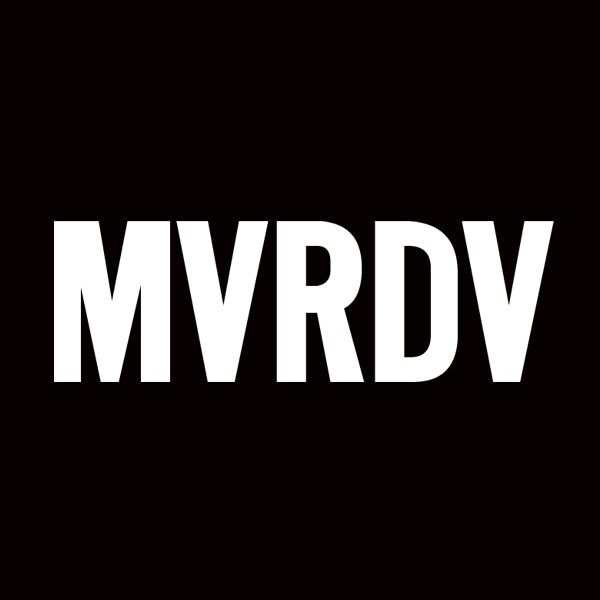
MVRDV · 2022-04-19 14:00:12

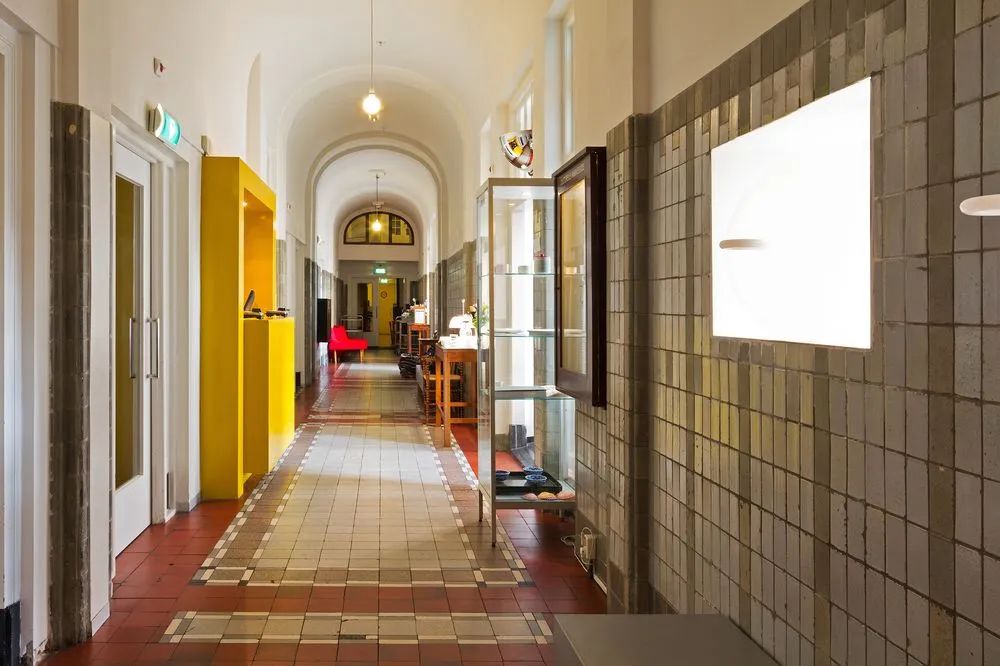
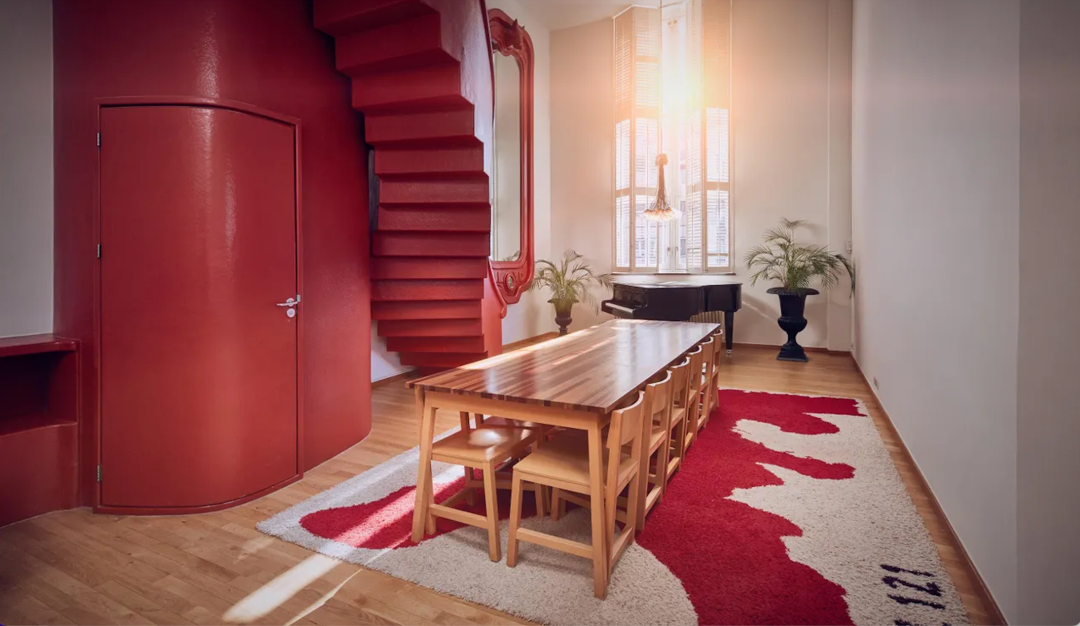
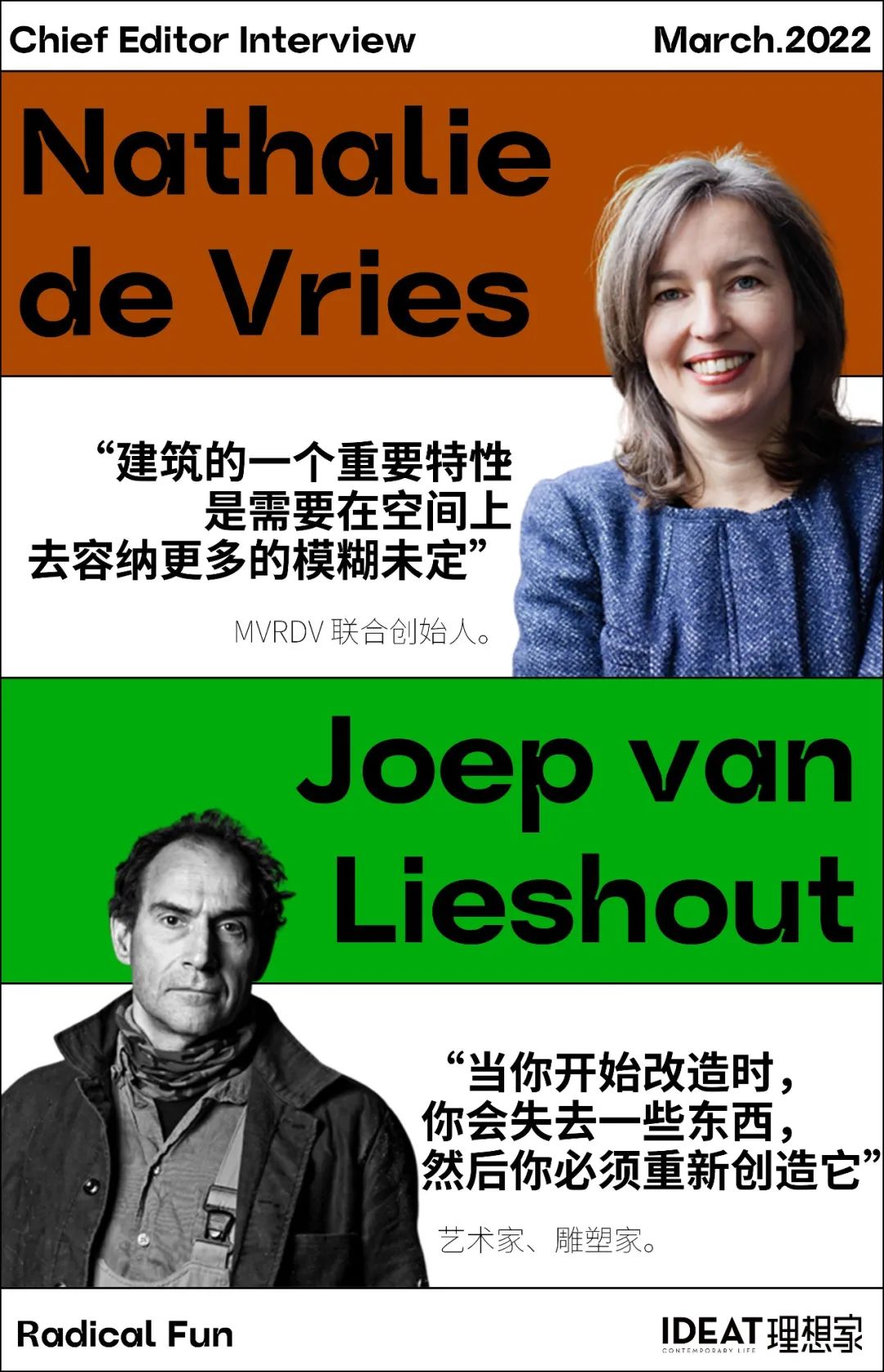
MVRDV 的创始合伙人 Nathalie de Vries 与荷兰艺术家 Joep van Lieshout 曾在 MVRDV 的早期项目——劳埃德酒店(The Lloyd Hotel)的改造中密切合作。在20世纪20年代开张时,这是一家面向移民的旅馆。为了打开幽闭的内部空间,MVRDV 在楼体中开凿了一个名为“文化使馆”(CulturalEmbassy)的空间,邀请艺术家重塑120个酒店房间。Joep van Lieshout 设计了其中的10间。借此,空间所释放出的艺术性与多样性又呼应着对“人”本身的关怀与包容。
MVRDV’s founding partner Nathalie de Vries has worked closely with Dutch artist Joep van Lieshout on one of the early projects of MVRDV, the renovation of The Lloyd Hotel. The hotel was open for emigrants when it was built in the 1920s. To open up the claustrophobic interior and create a communal area for tourists and other guests, MVRDV carved out a space from the existing structure and named it “Culture Emabssy”. 120 guestrooms were redesigned by invited artists, 10 of them were by Joep van Lieshout . The artistic and diverse vibe of the space echoes the idea of solicitude for humanity.
对于 Nathalie 来说,Joep 无疑是一位复杂又有趣的艺术家——如同一个雄心勃勃的游戏者,投身于艺术、设计和建筑之间的种种跨领域创作,游走在幻想和功能之间、生产力和“破坏力”之间......与此同时,他甚至是一个开发商!与许多大城市一样,鹿特丹也在面临士绅化的问题,Joep 发起了 Brutus 项目——一个由三座住宅楼组成的小型社区,旨在让创作者在城市中拥有一处永久的居所。“我希望提出一种新的城市更新模式,在这种模式下,当社区变得有吸引力时,生活在其中的创意工作者不会因此而被立刻扫地出门。”Joep van Lieshout 并不掩饰他对创造一方自由之地的野心。回顾历史,建筑与艺术之间从未泾渭分明;如今,建筑师和艺术家愈加需要紧密协作,再造城市。Nathalie de Vries 与 Joep van Lieshout 的对话正是基于这样的共识而展开,就像前者所说的 :“不仅仅是一个人做建筑,另一个人添加一点艺术,而是真正思考文化和艺术在我们生活环境中的作用。”
For Nathalie, Joep is undoubtedly a sophisticated and interesting artist – as ambitious as a gameplayer, working across different disciplines between art, design and architecture; between fantasies and functions, production and destruction… At the same time, he is also a developer! Like many big cities, Rotterdam is threatened by gentrification, Joep has launched the Brutus project - a small community of three residential buildings designed to give artists and creators a permanent home in the city. "I want to present a new model for urban renewal in which creatives will not be kicked out of the neighborhood as soon as it becomes attractive." Joep van Lieshout doesn't hide his ambition to create a place of freedom.Look back at our history, there has never been a clear separation between architecture and art; today, architects and artists need to collaborate more closely to recreate our cities. The dialogue between Nathalie de Vries and Joep van Lieshout is exactly based on this consensus, as Nathalie said: "The value of collaborating with artists: not only in a sense of one person making the building and the other persons adds a bit of art, but really thinking about the role of culture and art in our environment.”
再觅连接
Re-Connection
本文收录自 3月MVRDV客座主编专刊
This article is included in IDEAT CHINA X MVRDV
Guest Ed itor-in-Chief Sp ecial issue in March
Nathalie:首先,我想把你介绍给《IDEAT理想家》的中国读者。你能告诉他们你是什么类型的艺术家吗?
Nathalie: I first would like to introduce you to the Chinese reader of IDEAT. Can you tell them what type of artist you are?
Joep:我是一个直觉型的艺术家和雕塑家。我的项目游走于极简干净设计的世界和艺术的非功能领域之间:雕塑和装置,建筑和家具,乌托邦和反乌托邦。
Joep: I am an intuitive artist and sculptor. My projects travel between the world of easy-clean design and the non-functional area of art: sculpture and installations, buildings and furniture, utopias and dystopias.
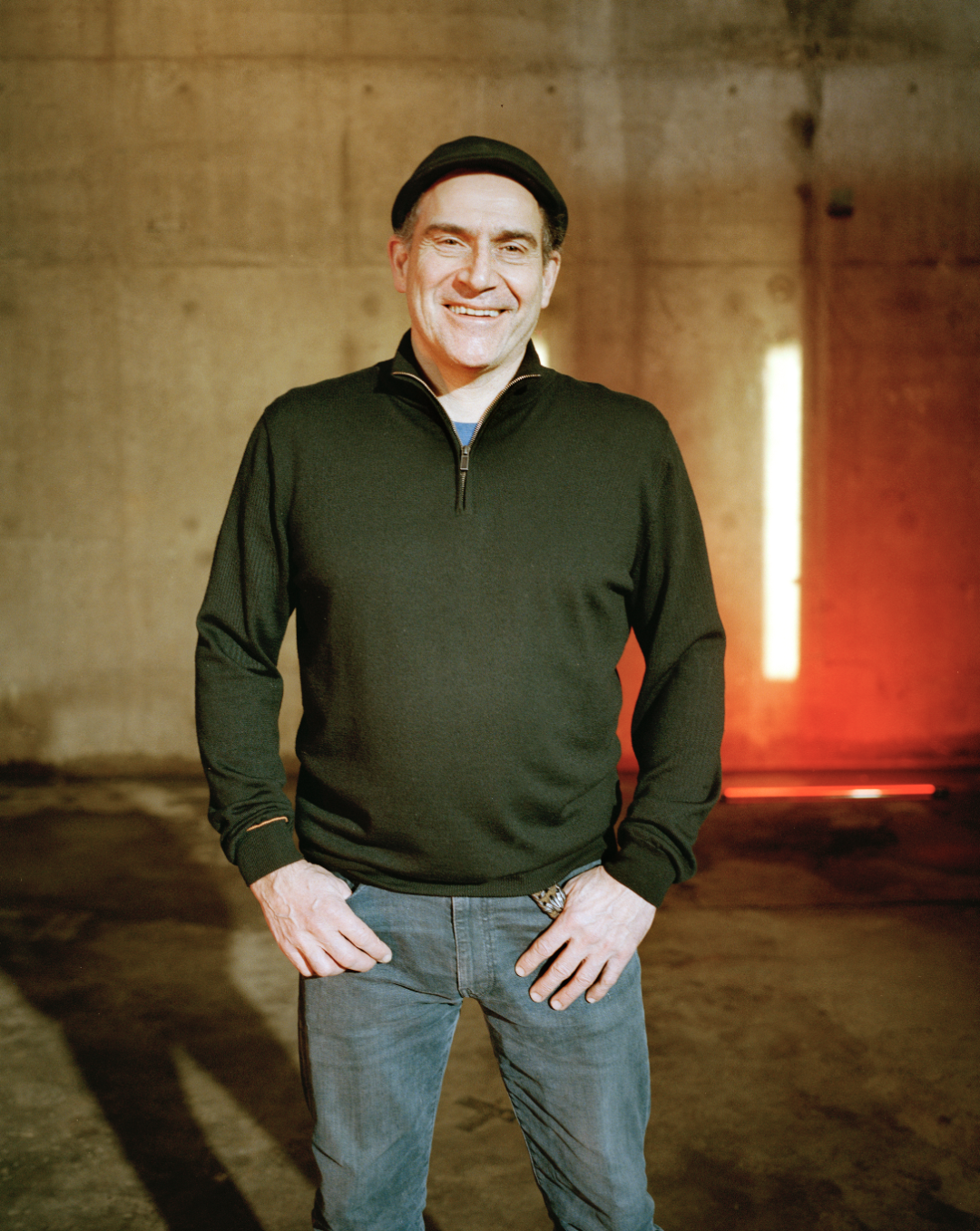
▲ Joep van Lieshout, 1995年成立Atelier van Lieshout工作室 ©Zahra Reijs
Joep van Lieshout, who founded Atelier van Lieshout in 1995 © Zahra Reijs
Nathalie:在你的自由创作中,我看到你表达了相当反乌托邦的对于未来的想象。在偏向实际应用的作品中,你则是带着乐观主义参与游戏。
Nathalie: If I look at your free work you create quite dystopian views for the future. In your applied work you play more with optimism.
Joep:游戏性(Playfulness)对我来说很重要。我是一个非常视觉导向的人。这也是为什么我喜欢与建筑师合作——他们对空间有着完美的感觉。这样的合作往往会结出友谊。不过我确实对当代的建筑师有一些批评意见:我认为他们犯了一个错误,就是只设计建筑(外部),而不太关注室内。过去,建筑师掌管关于建筑的一切,对门把手、窗帘之类的东西都要过问。现在,人们让室内建筑师、设计师或者营销公司负责室内装修。我觉得建筑师应该夺回控制权。如果客户不让他们设计室内,他们应该连建筑外观也拒绝设计。
Joep: Playfulness is important to me. For all I am very visually oriented. That is why I like working with architects since they have a perfect feeling for space. Collaborations often end in friendships. I do have some criticism: I think modern architects make a mistake of just designing the building, not the interior. In the old days architects were bosses of the buildings, they took care of door handles, the curtains and things like that. Nowadays you have an interior architect, designer or a marketing company that are responsible for the interior. I feel the architect should get back control. If clients don’t let them, they should refuse to design the exterior.
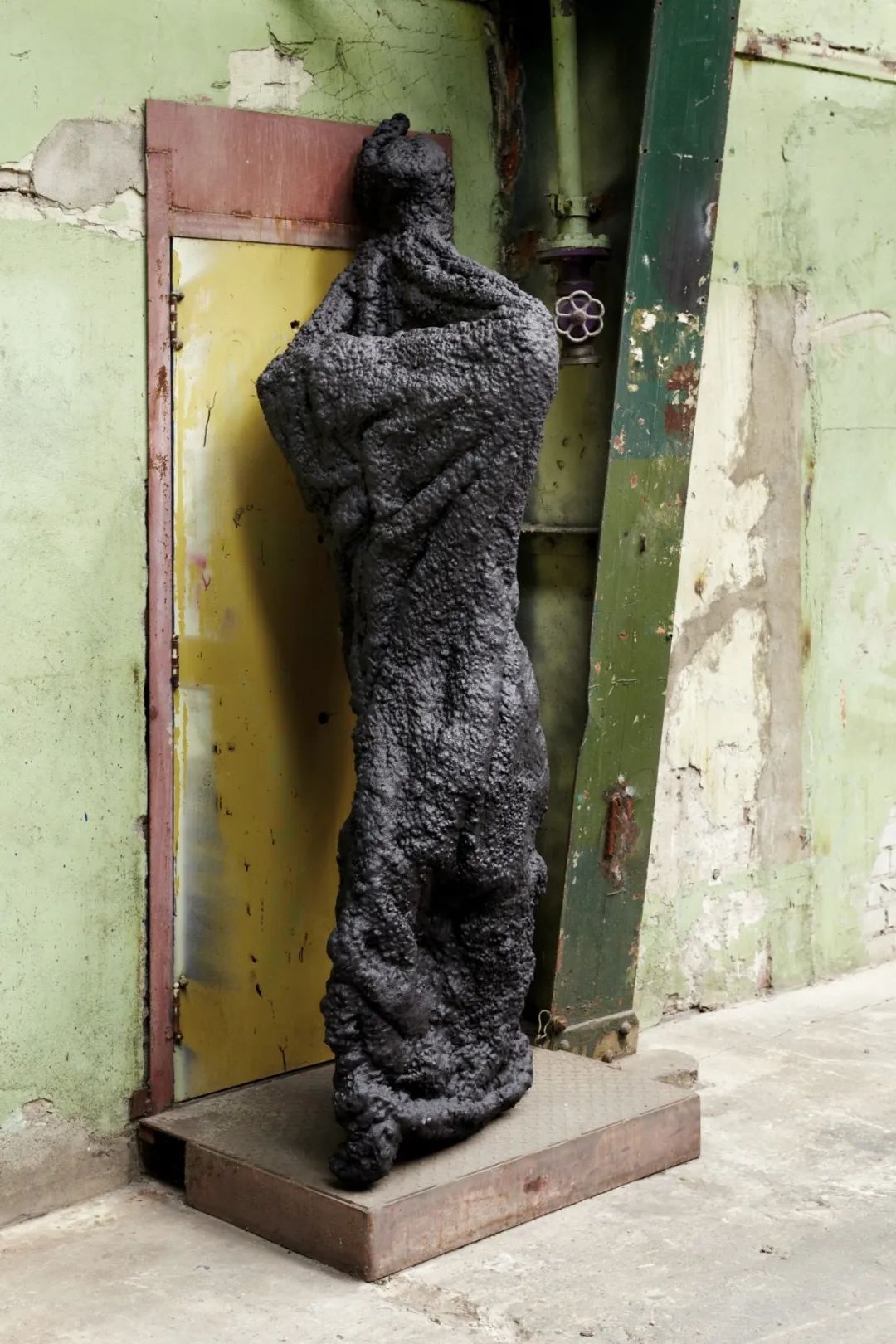
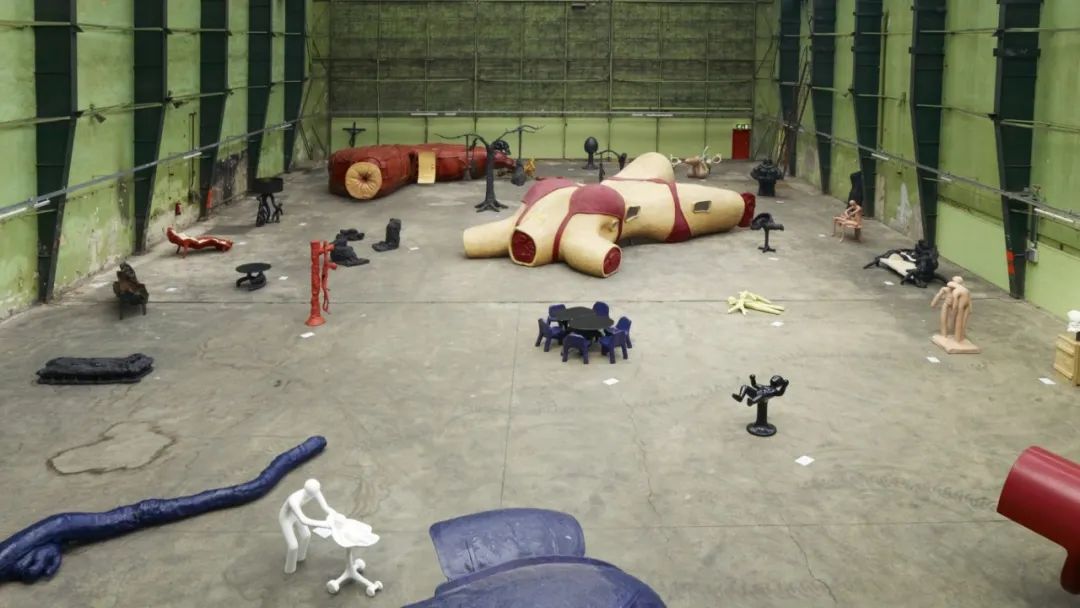

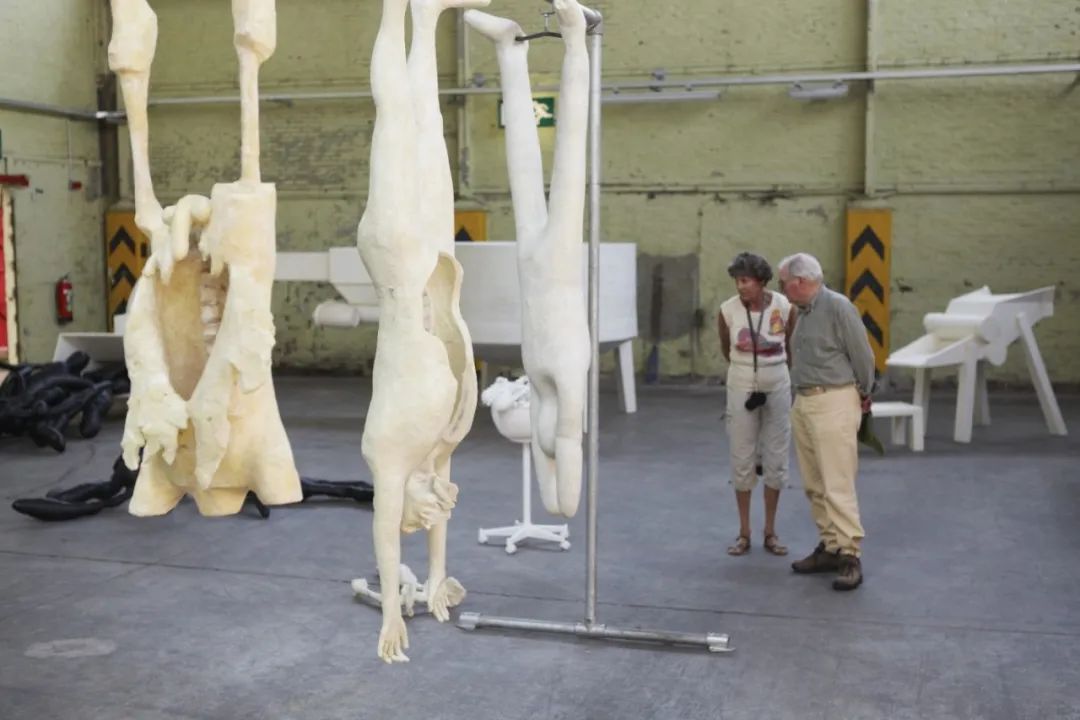
▲ Atelier Van Lieshout 在鹿特丹港举办的 Infernopolis 展览,在这些装置和场景中,善与恶、生与死、现实与虚构之间的界限已被打破。Atelier Van Lieshout 对系统的迷恋在艺术品 The Technocrat (2003-2004) 中清晰可见。
Atelier Van Lieshout's exhibition at Infernopolis in the Port of Rotterdam, in these installations and scenes, the boundaries between good and evil, life and death, reality and fiction have been broken. Atelier Van Lieshout's fascination with systems is clearly visible in the artwork The Technocrat (2003-2004)
Nathalie:我想我们确实在试着拿到控制权,但我们的职业性质非常不同:艺术家既有预算、也有自由来进行创意活动。劳埃德酒店是一个很好的例子。它在20世纪20年代开张时是一家面向移民的旅馆。为了打开幽闭的内部空间,并为游客和其他客人创造一个公共区域,我们在楼体中开凿了一个空间,即所谓的“文化使馆”(Cultural Embassy)。我们邀请艺术家设计了120个房间,其中的10间由你打造。
Nathalie: I think we do try to control, but we have very different trades: an artist gets a budget and freedom to be creative. The Lloyd Hotel is a good example. It started as a hotel for emigrants in the 1920s. In order to open up the claustrophobic interior and create a communal area for tourists and other guests, a void was carved through the volume, the so-called Cultural Embassy. We asked artists to design the 120 rooms, you did 10 of them.
Joep:其中的一个房间是一间双层古典音乐室,它有一架三角钢琴、宏伟的红色螺旋楼梯和一张巨大的床。
Joep: One of the rooms was a two storey classical music room, it has a grand piano, big red spiral staircase and a gigantic bed.
Nathalie:通过邀请艺术家设计劳埃德酒店的房间,我们为之赋予了艺术性,也使差异性、针对性和独创性成为可能。这种艺术性在一些建筑项目中正在消失,特别是当你有很多预制品的时候。
Nathalie: By inviting artists to contribute to the Lloyd Hotel-rooms, we brought in a certain artisanship. Which allowed for differences, specificities and uniqueness as well. In some architectural projects this artisanship is getting lost, especially when you have a lot of pre-fabricated stuff.
Joep:这也和对承包商的依赖性越来越大有关 。
Joep: This also has to do with the growing dependency on contractors.
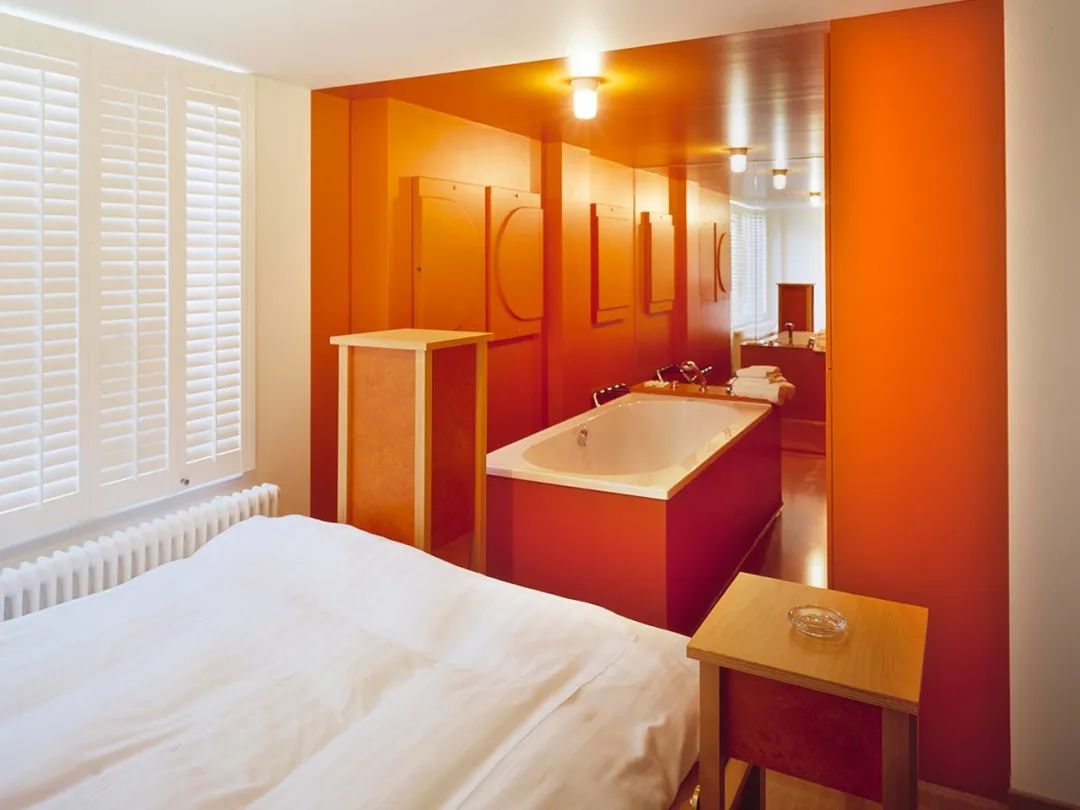


▲ 通过邀请艺术家设计劳埃德酒店(The Lloyd hotel)的房间,我们为之赋予了艺术性。”Nathalie de Vries 说, © Rob 't Hart Photography
By inviting artists to design the rooms at The Lloyd hotel, we have given it an artistic dimension." Nathalie de Vries says, © Rob 't Hart Photography
Nathalie:作为建筑师,我们的工作在商业化面前正岌岌可危。建筑正变得更重复、更廉价,而与此同时,建筑师失去了很多东西。要想寻回这些东西,你需要把控生产流程,展现自我。
Nathalie: As architects, we are in danger of losing our work to commerciality. Architecture is becoming more repetitive and getting cheaper and cheaper. Whereas at the same time we lose a lot of things as architects that can be brought in again if you take control over the production process, deliver your own.
Joep:如果你回顾历史,会发现建筑在过去与艺术有着非常密切的关系。我的意思是,任何 19 世纪的建筑都带有经过纹饰的外立面以及装饰性元素,比如屋顶上的马。像毕加索这样的抽象艺术家让我们开了倒车,而现在,艺术家的任务无非是为博物馆创作作品!
Joep: If you go back into history, architecture was very much related to art in the old days. I mean any building of the 19th century has sculptured facades and decorative elements, like horses on the rooftop. Abstract artists like Picasso set us back, and now artists are only asked to create work for museums!
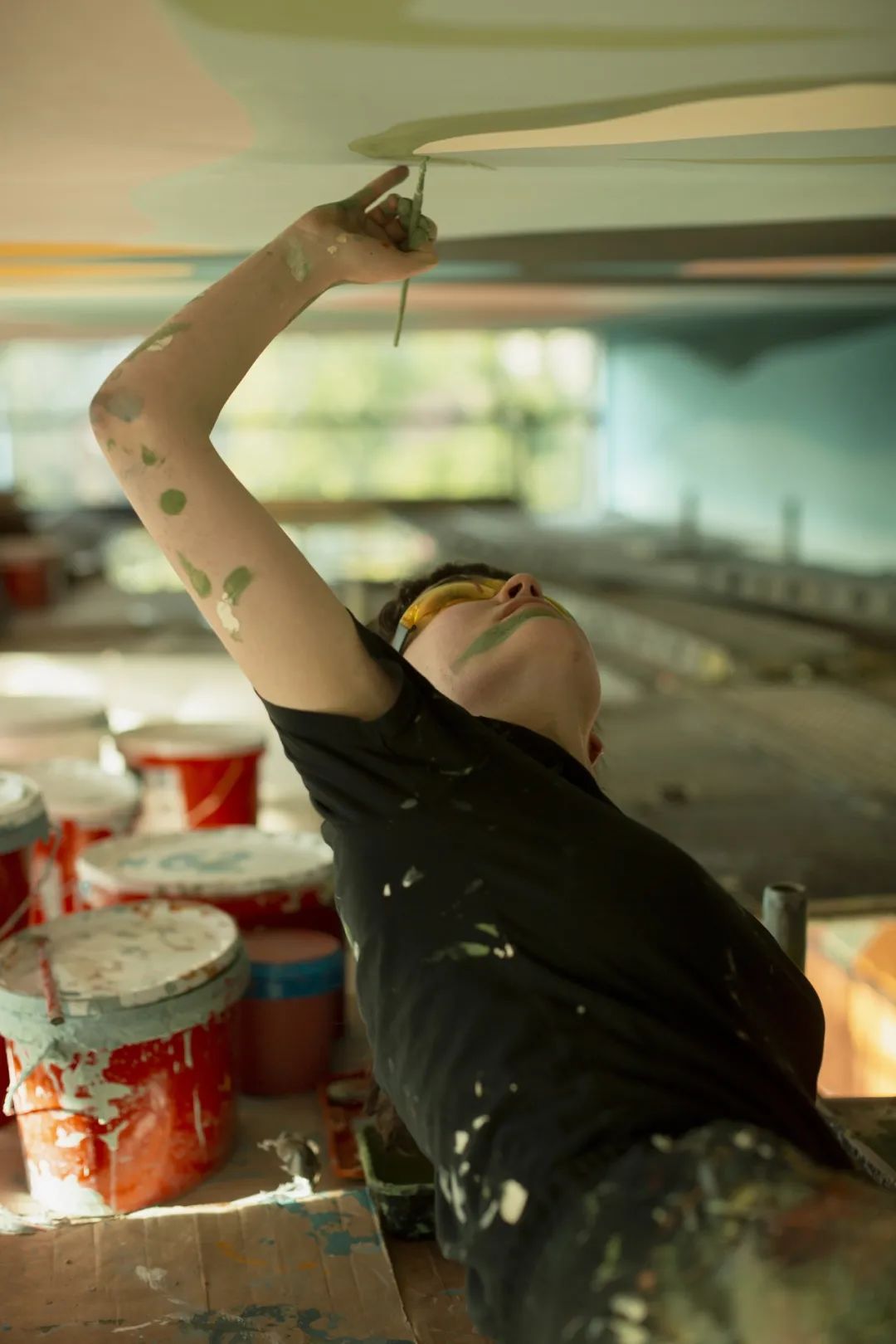
▲ 波兰艺术家为 Concordia 创作的壁画,© Dorota Kwiatkowska
Mural by Polish artist for Concordia, © Dorota Kwiatkowska
Nathalie:但是我们——或者说你——是能够把它(建筑与艺术之间的连结)找回来的!如果建筑师与艺术家合作,就像我们在劳埃德酒店项目上所做的那样,你就可以为建筑带来一条故事线,一个关于房子的叙事。我觉得建筑可以是极为通用的,所以我倾向于邀请艺术家参与其中。最近,我在波兰弗罗茨瓦夫(Wrocaw)的 Sodowa 岛参与了对一栋19世纪保护建筑的改造,邀请了一位当地艺术家来创作壁画。这带来了一种本土风情,带来了针对性。回到 Joep 之前说的,我不认为建筑师需要掌控一切,我们已经利用光线和空间来创造一种体验,引导人们在建筑中的行为与移动方式。不过,的确,近来建筑带有一些令人难以置信的抽象性,开始远离现实世界。极端的极简主义的危险在于个性的丧失。我认为我们必须以一种包容性的方式来设计,为不同的人群设计。不是每个空间都必须被敞开,正如每个人并不总是快乐的、闪耀的。这就是为什么我喜欢 Joep 作为艺术家的作品:他所呈现的人是完整的,有不同的需求,有多元的方式来表达自己。
Nathalie: But we – or you – are able to bring it back! If we as architects collaborate with artists, like we did for the Lloyd Hotel, you can bring in a storyline, a narrative to the building. I feel that architecture can be incredibly generic, so I tend to invite artists. In a recent transformation of a 19th-century listed building on the Sodowa Island in Wrocaw, Poland I invited a local artist to create murals. It gives a local flavour and brings in specificity. Coming back to what Joep said before: I don’t think architects need to control everything, we already use light and space to create an experience, to direct the way people behave in buildings, how they move. But it is true there is something incredible abstract about recent architecture where you sort of start to get so far out of the real world. The danger of extreme minimalism is that the personality will be lost. I think we have to design in an inclusive manner, for a diverse group of people. Not everybody is always happy, shiny, not every space has to be opened up. That is what I like in Joep’s work as an artist, that he presents people as complete, with different needs and different ways to express themselves.
Joep:如果当代建筑能对此投以更多的关注,那确实将是件好事。
Joep: It would indeed be great if in contemporary architecture there would be more attention for that.
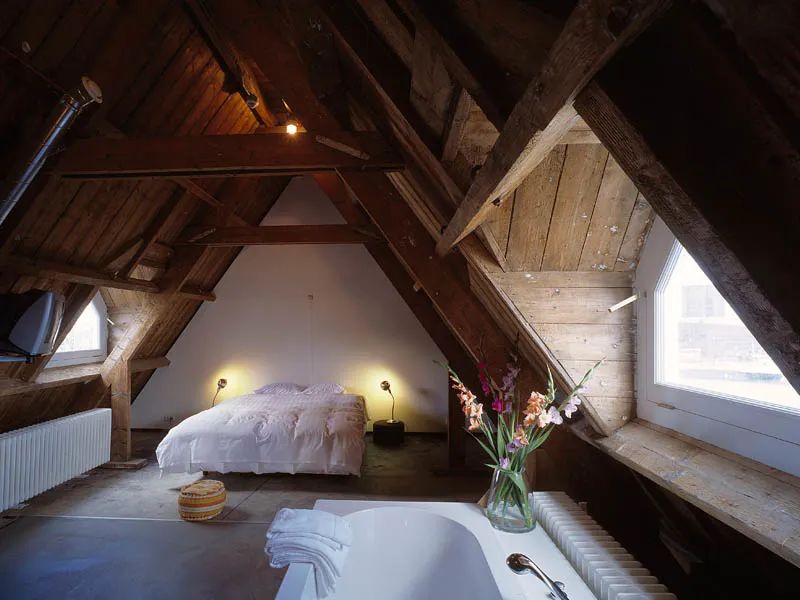

▲ 劳埃德酒店(The Lloyd hotel)房间, © Rob 't Hart Photography
Room at The Lloyd hotel, © Rob 't Hart Photography
Nathalie:我在想,人们是否总想要完全透明的建筑。其实,我们也需要封闭的空间,一丝阴影,一些可以隐藏自己的角落。对我来说,劳埃德酒店几乎是一种隐喻——在我们将它打开之前,它曾是一家移民旅馆,也曾是一个监狱。我们采用的概念是让房间具有像人一样的多样性,你可以在这些房间里做无数件事。这样一来,它们最终要服务的不仅是游客,也包括其他人群。
Nathalie: I wonder if people always want fully transparent buildings, you also need closed off spaces, a little darkness, corners where you can hide. To me the Lloyd Hotel is almost a metaphor, from an emigrant hotel and former prison we opened it up. The concept was to make the rooms as diverse as people are and that you can do a hundred things in these rooms. So in the end they were not just for tourists, but also for other people.
Joep:在我看来,开发商和建筑师在项目早期阶段就让艺术家参与进来、加入设计和规划团队是很重要的。我注意到,开发商们对于项目中的艺术品确实抱有比过去更大的兴趣,但他们并没有让我们真正参与到项目之中,而且艺术家的报酬往往是很低的。
Joep: I think it is important for developers and architects to include an artist in a very early stage and involve him in the design and planning team. I do see a bigger interest from the side of developers in art for their projects, but they don’t really involve us, and artists are often paid peanuts.
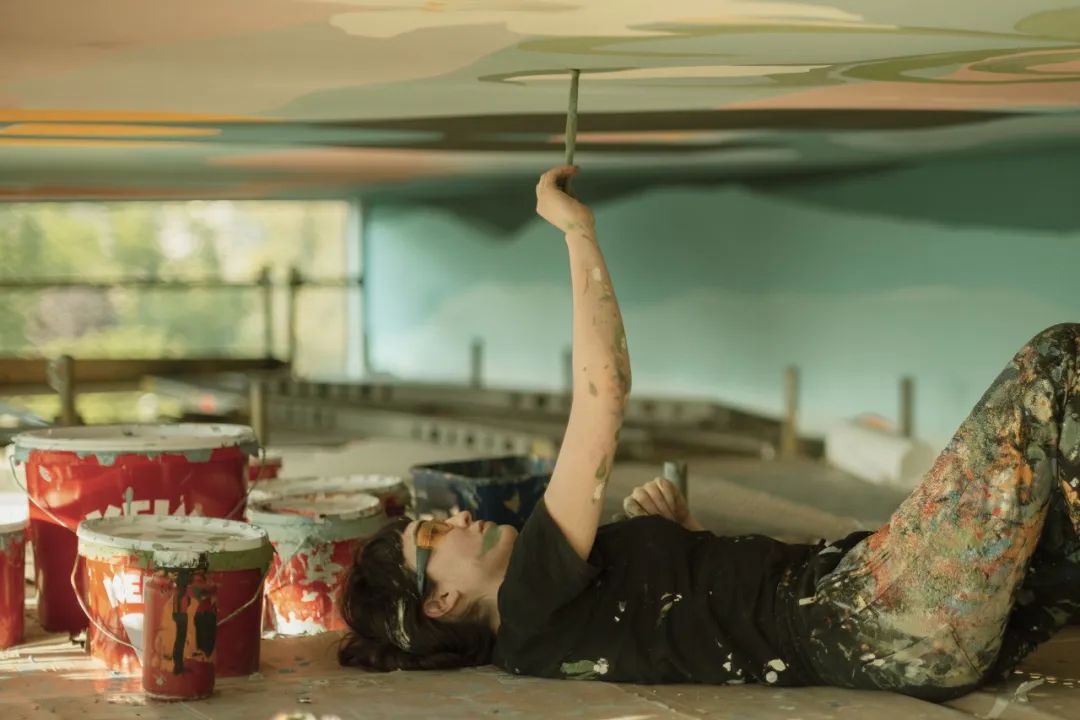
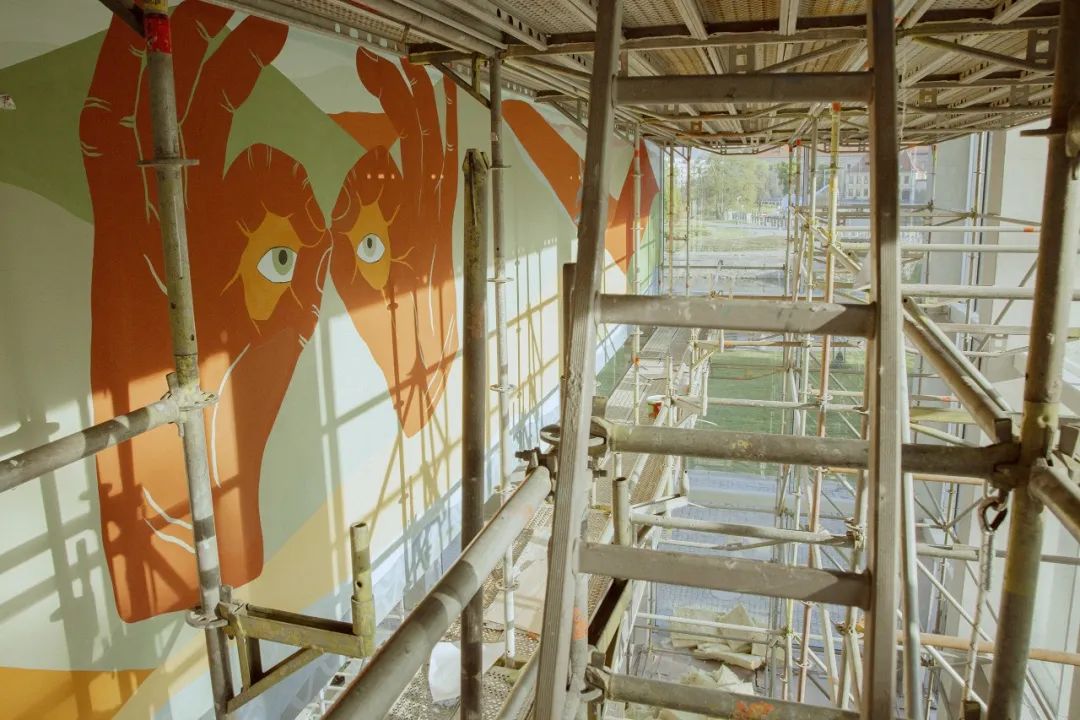
▲ 波兰艺术家为 Concordia 创作的壁画,© Dorota Kwiatkowska
Mural by Polish artist for Concordia, © Dorota Kwiatkowska
Nathalie:这也是你想在鹿特丹港开发你自己的社区——Brutus 的原因吗?在那个项目中,你购买了建筑与土地,组织了各种活动,甚至在此过程中提携了年轻艺术家。因此,在某种程度上,你扮演着赞助人的角色,为所有这些人提供了保护,创造了一方自由的避风港。
Nathalie: Is this the reason you wanted to develop your own neighborhood, Brutus in the harbor of Rotterdam? In that project became you bought buildings, you bought land, you organized all kinds of activities and in all that you even promoted young artists, so in a way you acted like a benefactor or a patron, you offered a roof for all those people, you created a free haven.
Joep:是的,我拥有土地,并确保创造一个空间做任何我想做的事。Brutus 这个综合体(Complex) 的名字来源于粗野主义(Brutalism),一种20世纪50年代到60年代的表现主义建筑风格,提倡全然的诚实(Nononsense Honesty)和乌托邦式的社会理想。在这个项目中,艺术和商业是平等的伙伴。创意人并非作为“场所营造者”被临时召来以使这个地方更能吸引开发 。在 Brutus,住宅和博物馆结合起来,形成一种新的艺术作品(Gesamtkunstwerk)。在这个面积达2250平方米、名为“迷宫”(The Maze)的建筑中,装置、雕塑、物品和机器遍布隧道、壁龛、走廊和“艺术陷阱”。每一步都会带来一种新的对抗。每走两步,就能获得一种新的洞察。1350平方米的 ExpoBrutus 专门留出来用于国际知名艺术家或新秀的独立策划个展。重点放在大型、沉浸式装置上,这种类型的作品被越来越多的博物馆认为过于昂贵和冒险,而在 ExpoBrutus,艺术家接受的挑战是在超大尺度上奉献杰作。
Joep: True, I have the land and I made sure to create a space to do whatever I want. The name of the complex refers to Brutalism, an Expressionist architectural style from the 1950s and 1960s that promoted no-nonsense honesty and a utopian ideal of society. In this project, art and commerce are equal partners. Creatives are not called in as temporary 'placemakers' who make the location attractive for development. In Brutus, homes and museums combine to form a new kind of gesamtkunstwerk," the initiators explain. In the 2,250-square-metre building called The Maze, installations, sculptures, objects and machines are spread across tunnels, niches, corridors and 'artistic traps'. Every step brings a new confrontation. Every two steps, a new insight. The 1,350 square metre ExpoBrutus is exclusively reserved for independently curated solo exhibitions by both internationally renowned artists and up-and-coming talent. The focus is on large-scale and immersive installations, the type of work that an increasing number of museums consider too expensive and risky. At ExpoBrutus, artists are challenged to excel in XXL format.
Nathalie:所以这次你有完全的掌控权?
Nathalie: So you are completely in control this time?
Joep:是的,我们掌控着全局。我真的想掌控室内的形态与氛围。我将留下来做这些房子的所有者。至于收到的租金,我将用于投资博物馆。
Joep: Yes, we are the boss of the situation, I really wanted to control the look and feel of the interior as much as the interior. I will stay to be the owner of the buildings. The rent I will receive, I will invest in the museum.
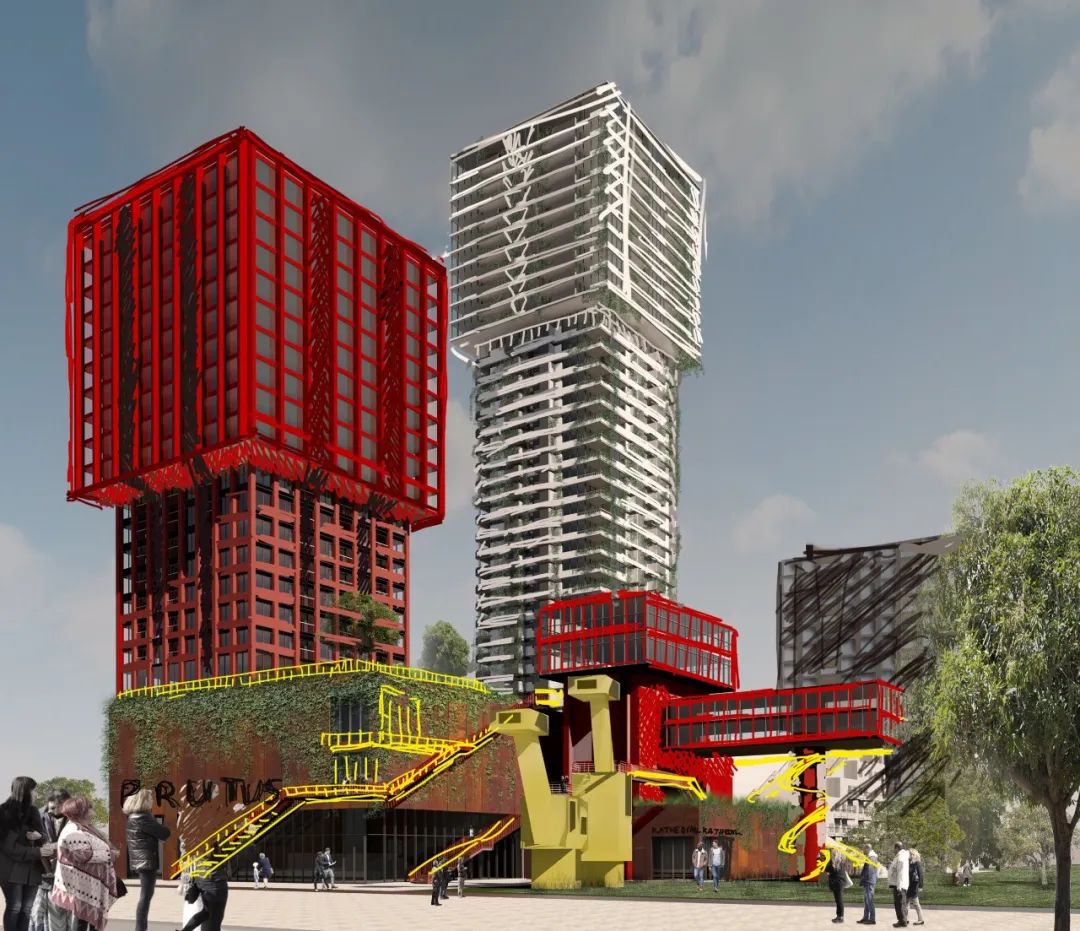
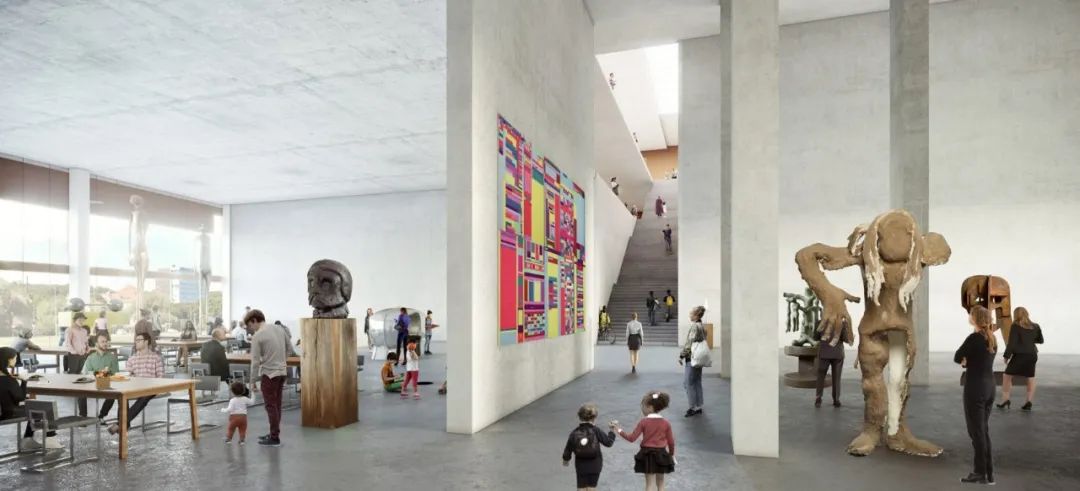
▲ 位 于鹿特丹的 Brutus 社区
Brutus Community in Rotterdam
Nathalie:在这个项目中,我一直对于你如何面对未知非常感兴趣。此外,我也很想知道你是否脱离了传统的室内建筑,以及你是否有典型的平面图或商业价值附加到公寓之中。
Nathalie: What always interests me in this project is how you will deal with unpredictabilities. And also, if you step away from conventional interior architecture, if you have typical floorplans or commercial values attached to your bedroom apartments.
Joep:是的,我当然要处理这个问题。对我自己来说,我喜欢开放的阁楼空间,但总有一些人喜欢有5个卧室的公寓。在极小和极大的公寓中潜藏着更多的可能性。目前的空间是由隧道和旧材料连接的。当你开始改造时,你会失去一些东西,然后你必须重新创造它。
Joep: I have to deal with that of course. For myself I like open loft spaces, but there will always be people who prefer a 5-bedroom apartments. In the very small and very large apartments there is more freedom. The existing spaces are linked by tunnels and old materials. You’ll lose that a bit when you transform, but then you have to recreate it.
Nathalie:在我看来,建筑的一个重要特性是需要在空间上去容纳更多的模糊未定(Undetermined)。换句话说,去建造更多不确定的房子,承载丰富多元的目的,而非停留在只能以某种方式使用的功能和空间——我认为这应是建筑的未来趋势。而这正让 Brutus 具有挑战性:你必须重新创造有机生长的东西。
Nathalie: One of the things I see as an important feature of architecture, is to include more undetermined spaced. I think an important future for architecture could be that we make much more undetermined buildings that can be used for many different purposes, not to get stuck in functions and rooms that can only be used in a certain way. This is where Brutus becomes challenging: you have to reinvent something which is organically grown.
Joep:我想找到一种方法,使它看起来不像是一个白盒子(White Cube)博物馆。它就像一个被绑在一起的建筑群。
Joep: I wanted to find a way to make it not look like a white cube museum. It is like a cluster of buildings tied together.
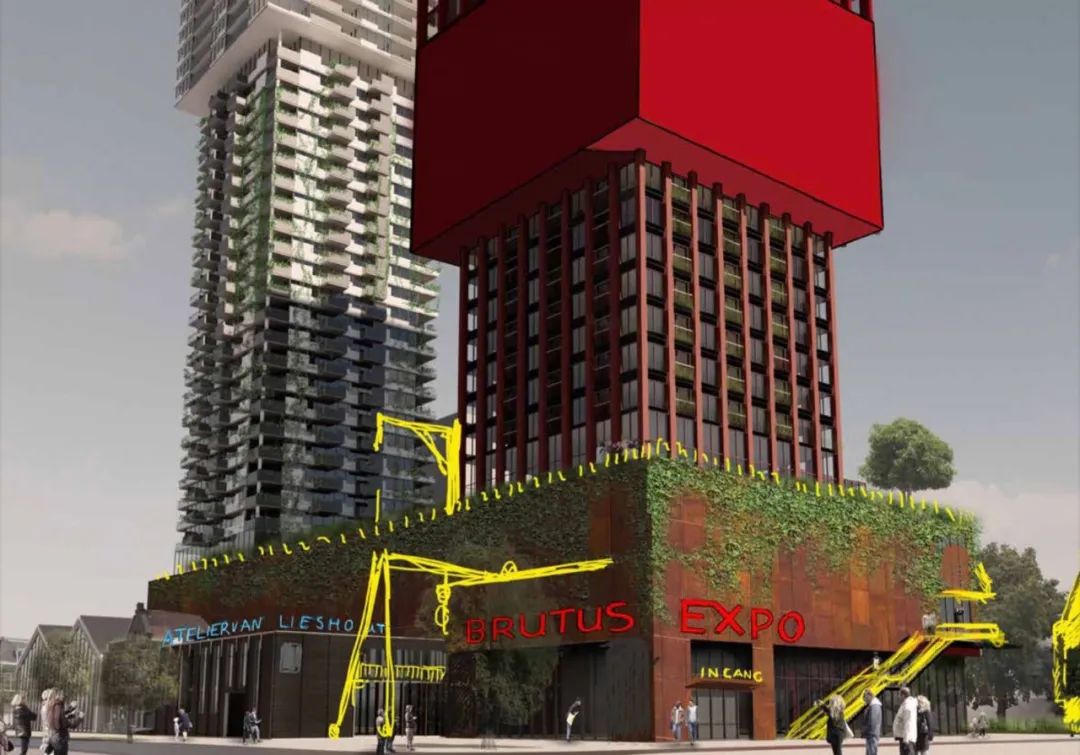
▲ 位 于鹿特丹的 Brutus 社区
Brutus Community in Rotterdam
Nathalie:这可能是一座理想城市的开端。如果我们把视野放开:我们正生活在一个极端透明的时代。建筑师开始把摄像头之类的各种智能设备登记我们所有的行为。你的工作恰恰相反,我觉得这很吸引人,你创造了黑暗、隧道和区域,在那里你不会被持续监视或监督。所以这就是与艺术家合作的价值:不仅仅是一个人做建筑,另一个人添加一点艺术,而是真正思考文化和艺术在我们生活环境中的作用。
Nathalie: It could be the start of an ideal city. If we zoom out: we are living in an era of extreme transparency. Architects start to put in all kinds of smart devices like cameras so we will see, listen to a register our behavior all the time. Your work is the opposite, which I find fascinating, you create darkness, tunnels and areas where you are not constantly watched or overseen. So, this is the value of collaborating with artists: not only in a sense of one person making the building and the other persons adds a bit of art, but really thinking about the role of culture and art in our environment.
Joep:我认为艺术家需要再次成为建制的一部分,就像19世纪那样。我认为所有的事情基本上都与钱有关,艺术家都非常穷,只有少数例外,所以他们是无能为力的。我仍然受邀参与极其昂贵的建筑项目,而他们要求用很少的钱做一个比实物还大的雕塑。
Joep: I think artists need to become part of the establishment again, like in the 19th-century. I think all is related to money basically, artists are extremely poor, with a few exceptions, so they are powerless. I am still asked for contributions to extremely expensive buildings where they demand a larger-than-life sculpture for little money.
Nathalie:你的意思是,如果我们将艺术和艺术家推到社会之外,我们就创造了一种将艺术思考排除在外的未来?艺术家被排除在外,原因在于我们的社会是基于金融和经济的。
Nathalie: Are you saying that if we push art and artist to the outside of society, we create a future and thinking about architecture and the development of our environments in which we push a whole category of thinking to the outside? Artists are ruled out because our society is finance and economy based.
Joep:是的,另一个典型例子是教堂。他们要求艺术家为室内创作作品,比如挂毯之类的,直到20世纪60年代。现在,这完全消失了。
Joep: Yes, another example are churches. Until the sixties they asked artists to make work for their interiors, tapestries and the like. That completely disappeared.
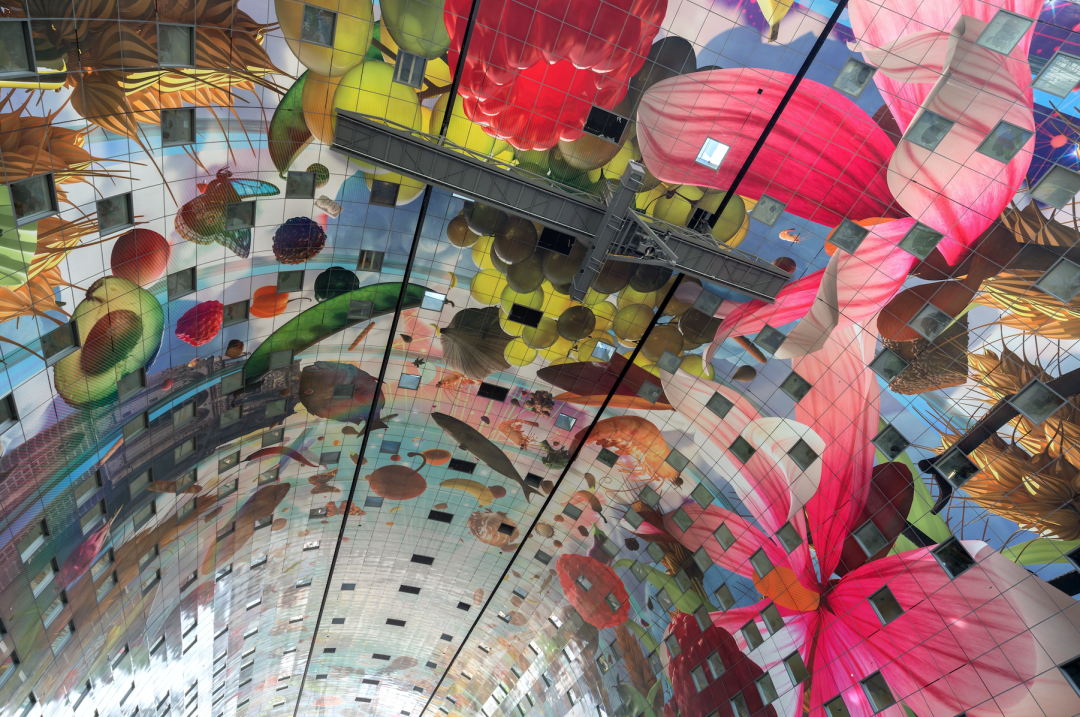
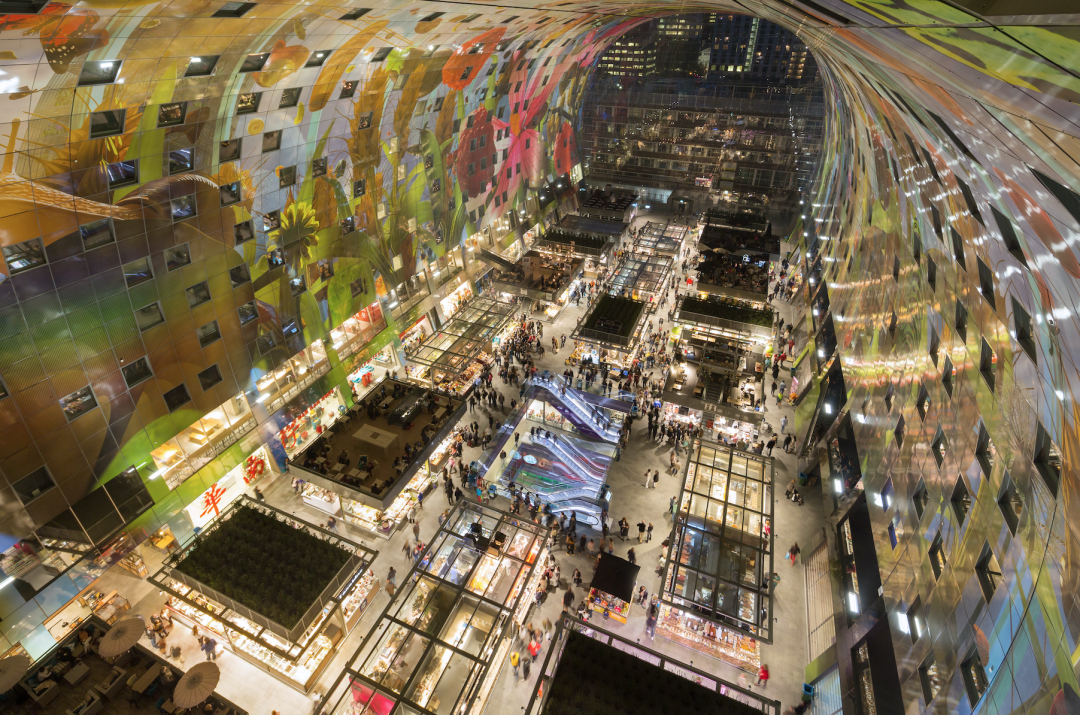
▲ Markthal 项目室内创作,创作 ©Arno Coenen+ Iris Oskam ,摄影 ©Ossip van Duivenbode
Markthal project interior, artist ©Arno Coenen+ Iris Oskam, photography ©Ossip van Duivenbode
Nathalie:嗯,我想这是一个普遍的现象,不仅仅是在欧洲,全球都是如此。如果我回想一下我们的波兰艺术家为 Concordia 设计的壁画,反映了城市的历史......我认为建筑和艺术作品不能离开对方而存在,它们共同讲述了一个故事。同样,鹿特丹的 Markthal 如果没有天花板上描绘的艺术品“丰饶之角(Horn of Plenty)”也将变得难以想象。我认为你为劳埃德酒店设计的房间肯定给来访者留下了深刻印象。
Nathalie: Well, I think this is a universal issue, this is not just in Europe but a worldwide phenomenon. If I think back about our Polish artist who made murals for Concordia design that reflected the history of the city…I don’t think the building and artwork can exist without the other, together they tell a narrative. Also, the Markthal in Rotterdam has become unimaginable without the artwork ‘Horn of plenty’ that is portrayed on the ceiling. I think the rooms you designed for the Lloyd Hotel certainly left an impression on the people visiting the hotel.
Joep:我同意!而且我完全可以想象再度合作。事实上我正在考虑邀请 MVRDV 参与某些开发项目。我想我必须扩大规模,以取得更多的成就。
Joep: I agree! And I can imagine collaborating again, I was actually thinking of inviting MVRDV for certain development projects. I think I have to scale up in order to achieve more.
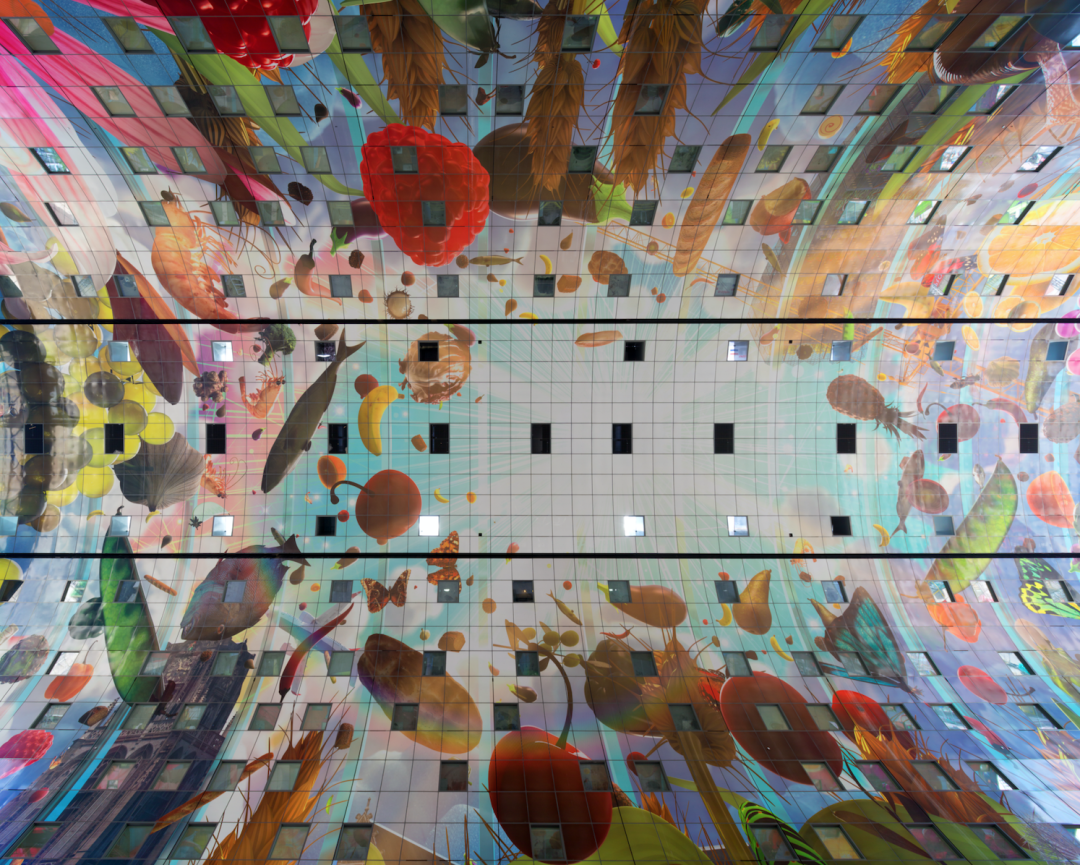
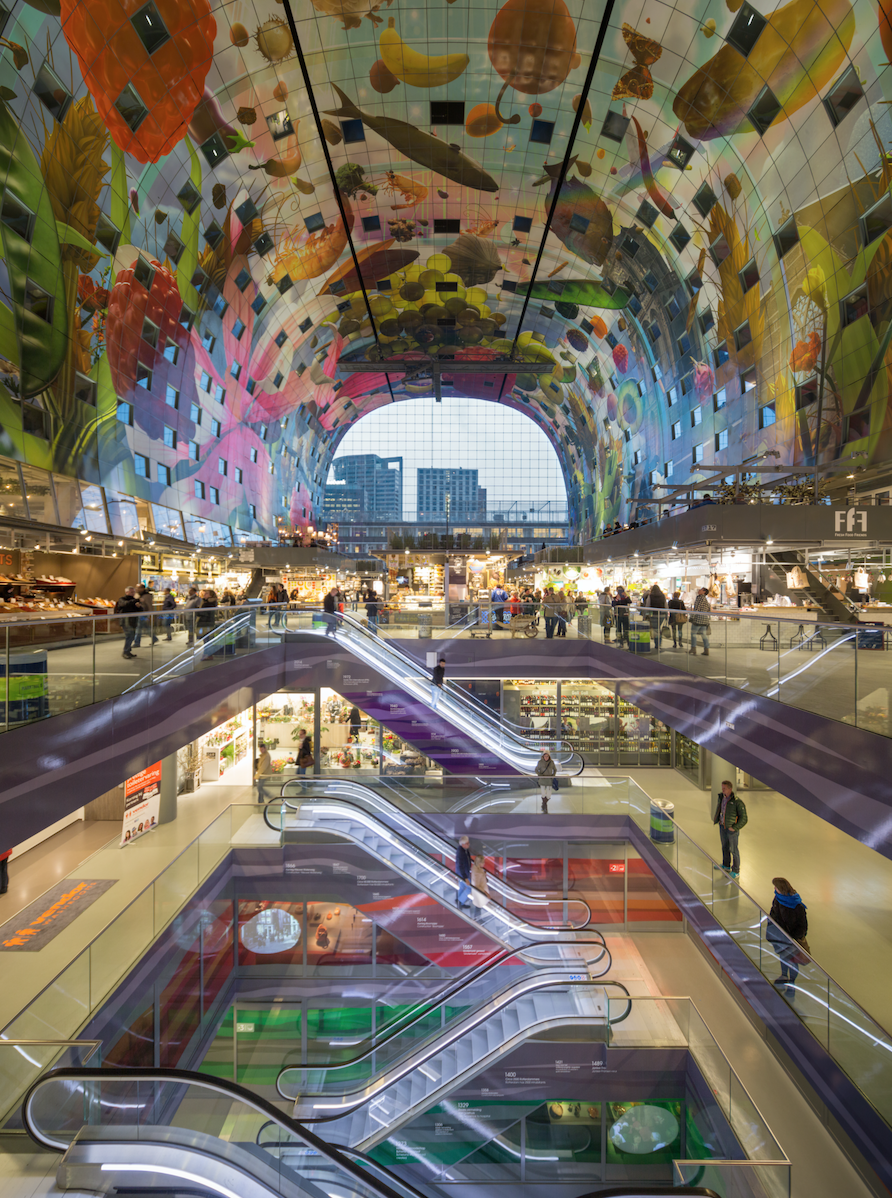
▲ Markthal 项目室内创作,创作 ©Arno Coenen+ Iris Oskam ,摄影 ©Ossip van Duivenbode
Markthal project interior, artist ©Arno Coenen+ Iris Oskam, photography ©Ossip van Duivenbode
Nathalie:我也相信你经过多年的发展,你变得更像一个合作伙伴(Partner),而不是代表别人的创造者。
Nathalie: I also believe that you have developed over the years, you became more of a partner instead of a creator on behalf of someone else.
Joep:这有一个重要的原因:在项目开始时,每个人都很热情和兴奋,一切都很新鲜。而当建筑就绪,每个人都筋疲力尽,施工超出预算,还有一些细节需要修复等等。然后艺术家进来了......
Joep: There was an important reason for that: in the beginning of a project everyone is enthusiastic and excited, everything is new. When the building is ready, everyone is exhausted, the construction is over budget and there are details to be fixed etcetera. And then the artist comes in...
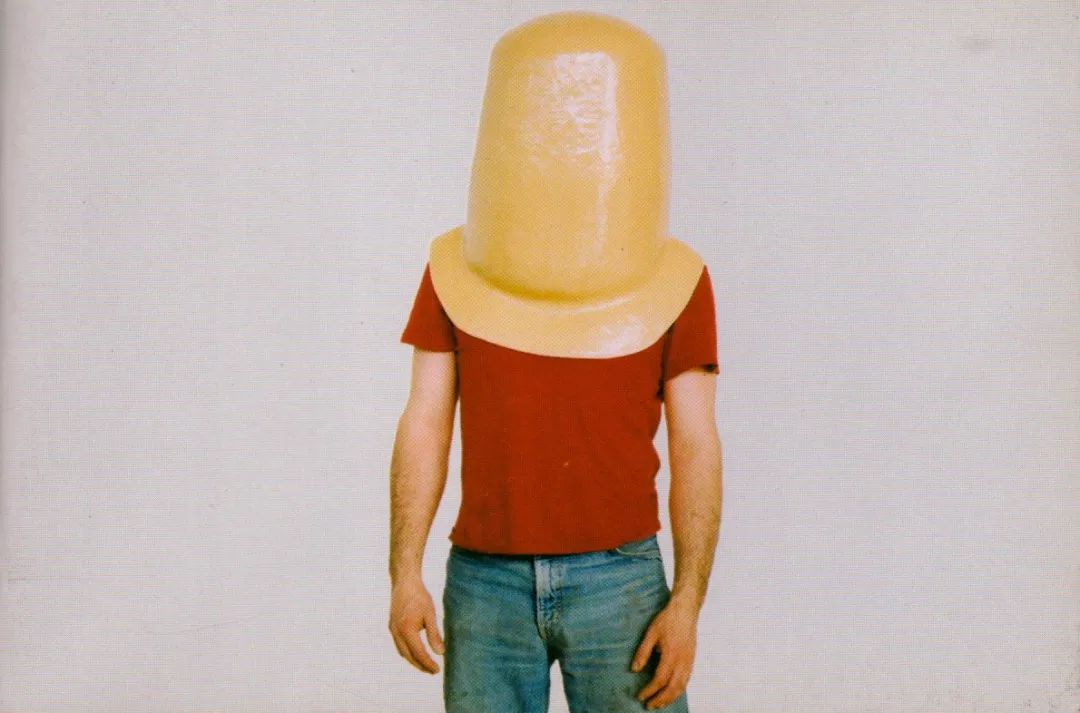
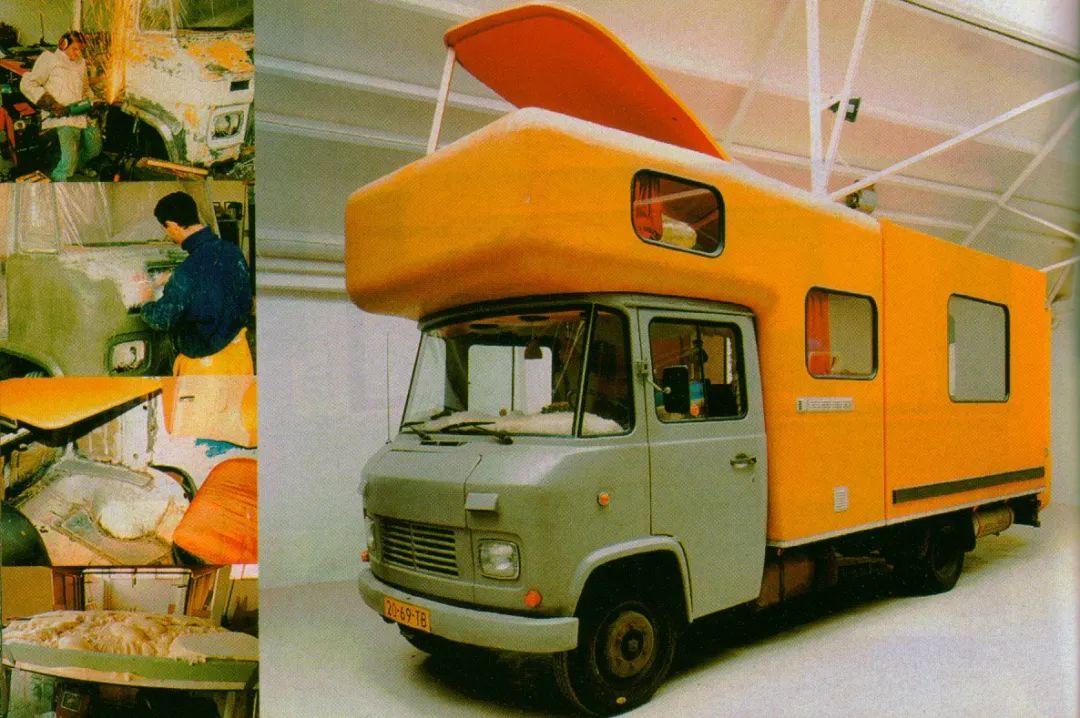
▲ 这本 ATELIER JOEP VAN LIESHOU T 记录了艺术家早期的一些创作 by Wayne & P. Groot (VAN LIESHOUT, JOEP). Baerwaldt (Author)
ATELIER JOEP VAN LIESHOUT documents some of the artist's early works by Wayne & P. Groot (VAN LIESHOUT, JOEP). Baerwaldt (Author)
Nathalie:听起来你有点悲观,我不认为我们曾经以这种方式合作过,对吗?
Nathalie: Now you sound pessimistic, I don’t think we have ever collaborated in such a way, correct?
Joep:(笑)刚才是泛泛而谈,我想解释自己的转变。我想站在最前面,从一开始就参与其中。
Joep: [laughs] I am talking in general and explain my shift, I want to be at the forefront, to be included from the start.
Nathalie:这可能是游戏规则的改变。我想,我们的对话也可以被视为建筑师与艺术家之间再次协调彼此思维的一场邀请。某种程度上,我们应该是同伴(Partners in Crime),而不是完全不同的圈子或泡沫的一部分。
Nathalie: That can be a game changer. I think this talk can be read also a mutual invitation to unite the rules of thinking again between architects and artist. In a way we should be partners in crime and not part of completely different circles or bubbles.
Joep:正是如此。建筑师和艺术家一起可以取得更多的成就!
Joep: Exactly! Together you can achieve so much more!
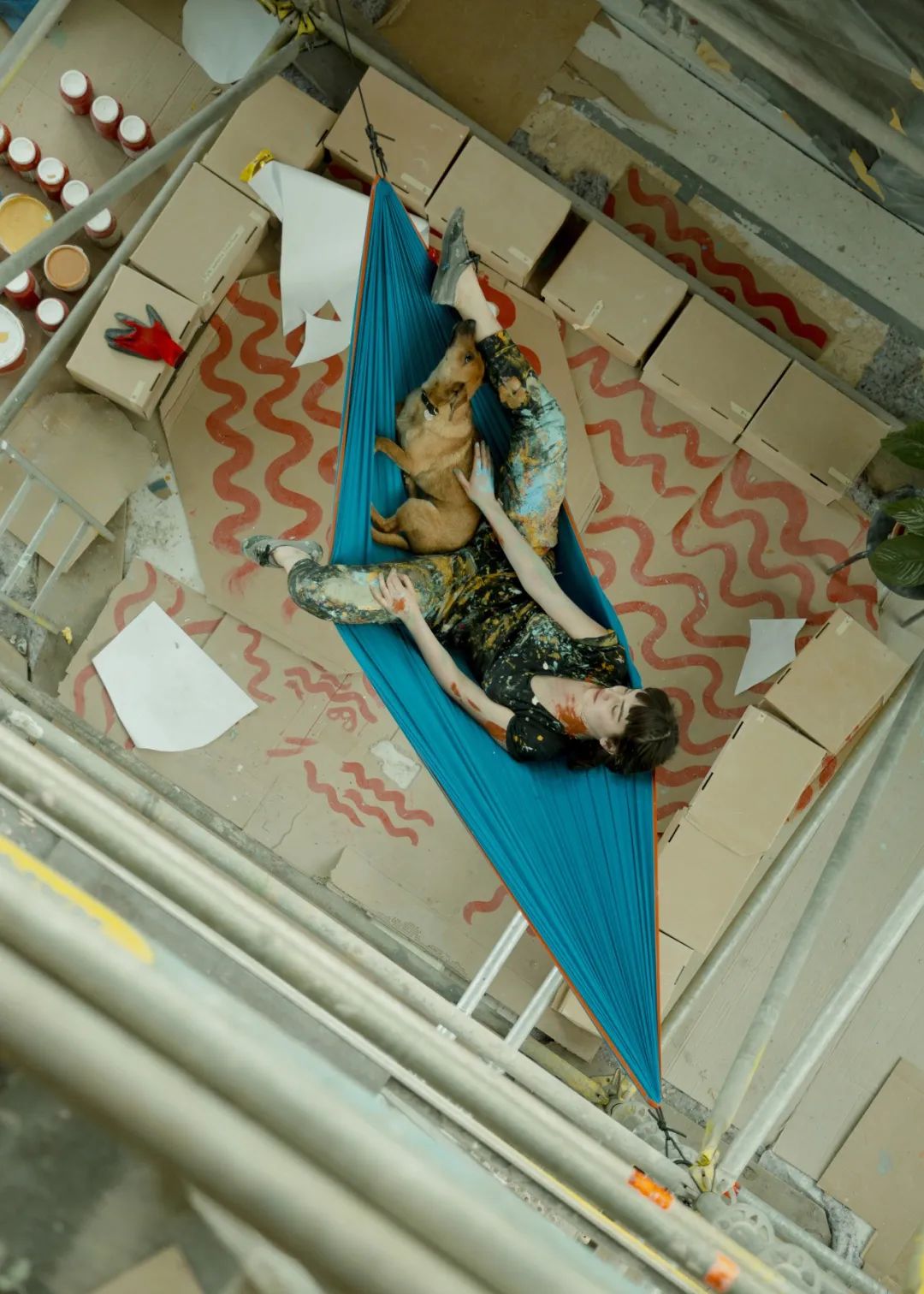
▲ 波兰艺术家为 Concordia 创作的壁画,© Dorota Kwiatkowska
Mural by Polish artist for Concordia, © Dorota Kwiatkowska
编辑:Sheryn
翻译:Berton、Sheryn
图片:MVRDV
新媒体编辑:大野
版式设计:甜甜
MVRDV建筑规划事务所由Winy Maas、Jacob van Rijs和Nathalie de Vries创立于荷兰鹿特丹,致力于为当代的建筑和都市问题提供解决方案。MVRDV的创作基于深度研究与高度协作,各领域的专家、客户及利益相关方从项目初期一直参与设计的全过程。直率而真诚的建筑、都市规划、研究和装置作品堪称典范,让城市和景观朝向更美好的未来发展。
MVRDV的早期项目,如荷兰公共广播公司VPRO的总部,以及荷兰阿姆斯特丹的WoZoCo老年公寓,都获得了广泛的国际赞誉。MVRDV250余位建筑师、设计师和城市规划师在多学科交叉的设计过程中,始终坚持严格的技术标准和创新性研究。MVRDV采用BIM技术,公司内拥有正式的BREEAM和LEED顾问。MVRDV与荷兰代尔夫特理工大学合作运营独立智库和研究机构The Why Factory,通过展望未来都市,为建筑及都市主义提供发展议程。
MVRDV was set up in 1993 in Rotterdam, The Netherlands by Winy Maas, Jacob van Rijs and Nathalie de Vries. MVRDV engages globally in providing solutions to contemporary architectural and urban issues. A research-based and highly collaborative design method engages experts from all fields, clients and stakeholders in the creative process. The results are exemplary and outspoken buildings, urban plans, studies and objects, which enable our cities and landscapes to develop towards a better future.
Early projects by the office, such as the headquarters for the Dutch Public Broadcaster VPRO and WoZoCo housing for the elderly in Amsterdam lead to international acclaim. 250 architects, designers and other staff develop projects in a multi-disciplinary, collaborative design process which involves rigorous technical and creative investigation. MVRDV works with BIM and has official in-house BREEAM and LEED assessors. Together with Delft University of Technology, MVRDV runs The Why Factory, an independent think tank and research institute providing an agenda for architecture and urbanism by envisioning the city of the future.
更多详细信息,请联系MVRDV亚洲公共关系部
特别声明
本文为自媒体、作者等档案号在建筑档案上传并发布,仅代表作者观点,不代表建筑档案的观点或立场,建筑档案仅提供信息发布平台。
32
好文章需要你的鼓励

 参与评论
参与评论
请回复有价值的信息,无意义的评论将很快被删除,账号将被禁止发言。
 评论区
评论区